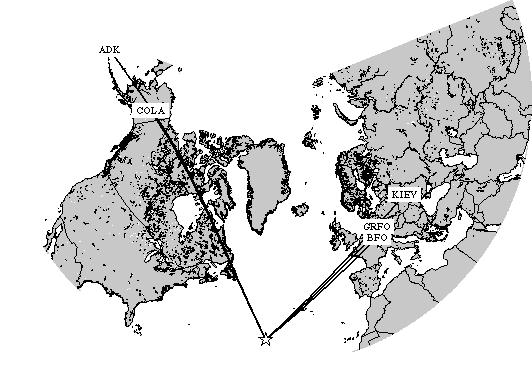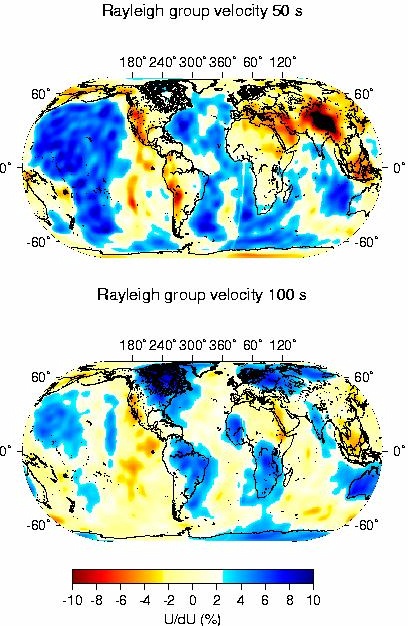
Step 4: Interpretation of the results

Figure 1. Map showing the location of an earthquake near the Mid Atlantic Ridge and ray paths to five stations, stations COLA and ADK in Alaska, stations BFO and GRFO in Germany, and station KIEV in the Ukraine.
Event Information
On October 5th, 2000 a moderately large event occurred near the Mid Atlantic
Ridge. It had a moment magnitude of 6.1 and occurred at 13:39:11.7 GMT. Its location was 31.73N
and -40.96E, the depth was approximately 10 km.
Interpretation of the phase and group velocity measurements.

Figure 2. Group velocity maps for Rayleigh waves, top, period = 50s, bottom, period = 100s. These maps show percentage group velocity perturbation relative to Earth model PREM. From: Larson, E.W.F. and G. Ekström, Global Models of Surface Wave Group Velocity, Pure Appl. Geophys. 158 (8), 1377-1400, 2001.